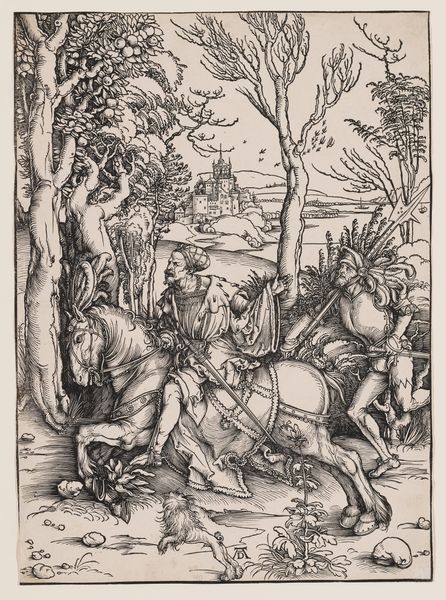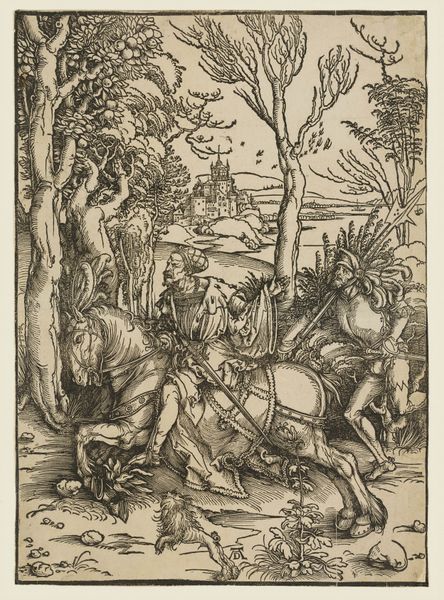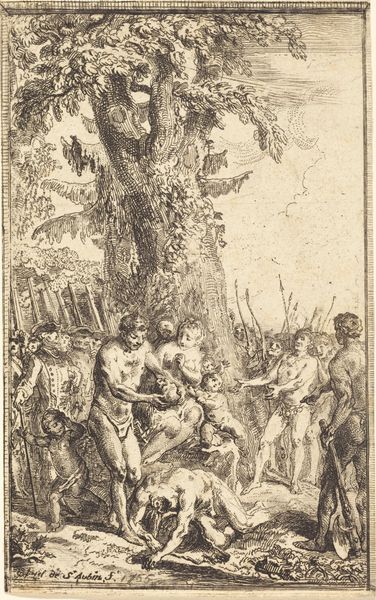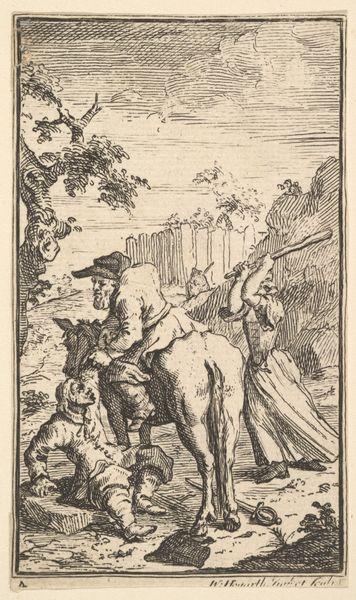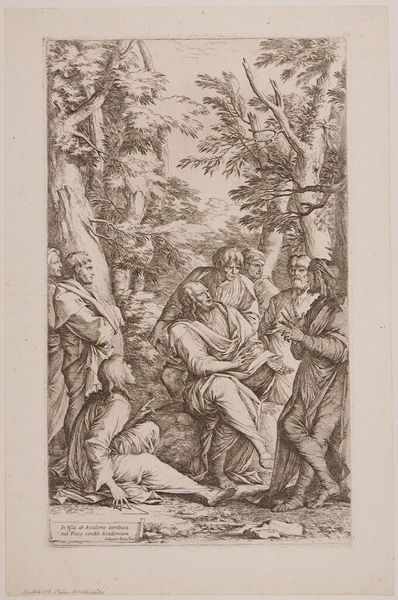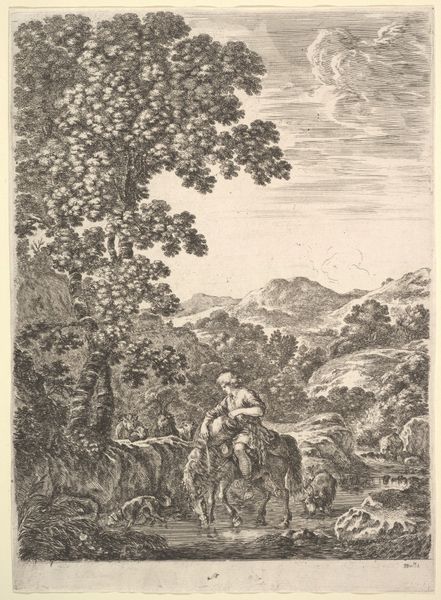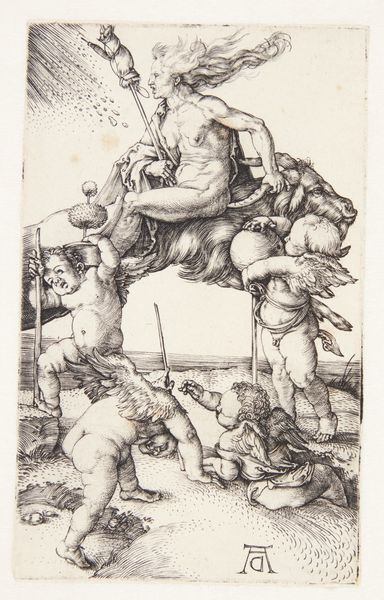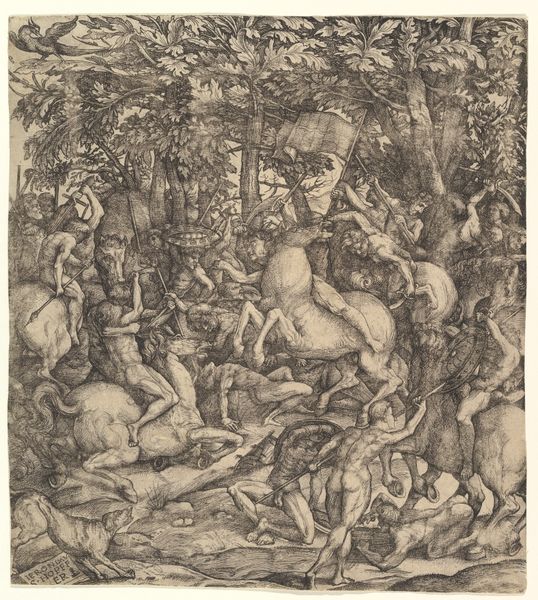
The Escape of M. de Belle-Isle, Prisoner in the Attakapas, plate four from Les Nouveaux Voyages aux Indes Occidentales 1767
0:00
0:00
drawing, print, etching, paper, ink
#
drawing
#
narrative-art
# print
#
etching
#
landscape
#
paper
#
ink
#
history-painting
Dimensions: 121 × 75 mm
Copyright: Public Domain
Gabriel de Saint-Aubin etched "The Escape of M. de Belle-Isle, Prisoner in the Attakapas" in 1767 to illustrate New Voyages to the West Indies. Note how the natives are rendered half-naked, with simplified features, embodying the European perception of the 'savage' or 'natural' man, a motif that stretches back to classical antiquity. Observe the dynamic tension between the figures: Belle-Isle is caught between the embracing, dark-skinned natives and the beckoning figure on horseback. This push and pull, this visual and psychological struggle, finds echoes in countless depictions of captivity and liberation throughout art history. Consider the symbolism of the horse, often associated with nobility, freedom, and escape, juxtaposed against the earth-bound natives. The horse here isn’t merely a mode of transport; it's a potent symbol of power and civilization, a visual shorthand that reinforces a certain cultural narrative. This narrative, deeply embedded in our collective memory, evokes a complex web of emotions, from empathy and liberation to the tension of cultural dominance. These archetypes resonate with us even now.
Comments
No comments
Be the first to comment and join the conversation on the ultimate creative platform.

